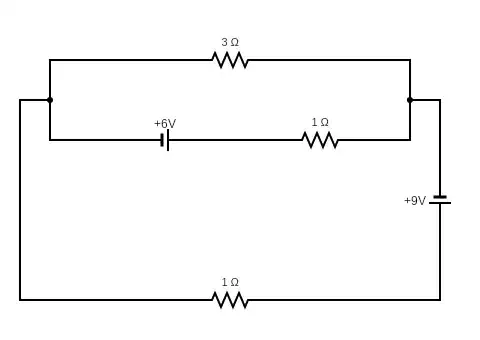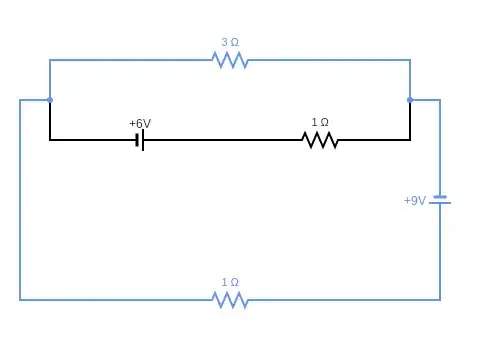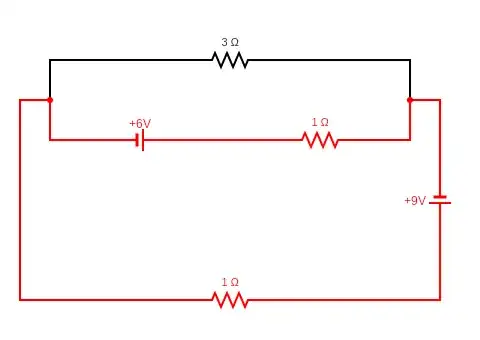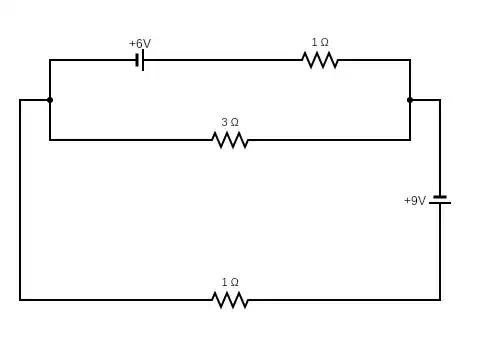I've been practising to solve some exercises on electric circuits, especially using Kirchhoff's loop rule. Here I am asked to determine the intensity of the currents passing through each of the resistors.
To solve the exercise, I have to focus on two independent closed loops. The rectangle on the top, containing two resistors and a cell, is clearly one of them. As for the second one, no matter which of the following two I consider, I get the same result (as I expected):
However, the circuit I was given made me think that the result should be the same if I physically flipped the loop on the top, with a $3D$ rotation:
Unfortunately, it looks like this is not the case, but I can't see how this simple geometric transformation could affect the current flowing in the small loop. In fact, after a bit of simplification, from the given picture (and the blue loop) one gets $$\begin{cases} 9-i_1+3i_2=0 \\ 6-i_1-4i_2=0 \end{cases} \\ \implies (i_1,i_2)=\left(\frac{54}7,-\frac37\right)$$ while for the flipped one $$\begin{cases} 15-i_1-i_2=0 \\ 6+3i_1-4i_2=0 \end{cases} \\ \implies (i_1,i_2)=\left(\frac{54}7,\frac{51}7\right)$$ (here $i_1$ is the current flowing through the red loop and $i_2$ the one flowing through the small circuit on the top).
I guess the shortcoming here lies in what I called $i_1$ and $i_2$. Precisely, I guess that they do not play the same role in the two situations. If this is the real problem, how to fix it? Can the flip be applied properly to get the same result?



